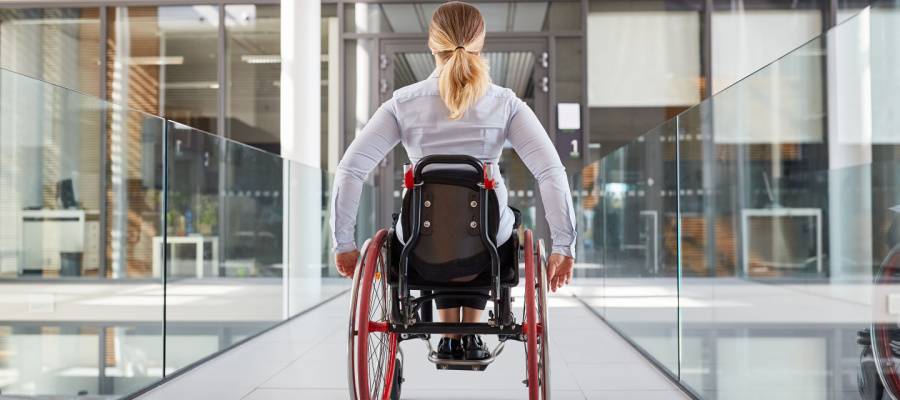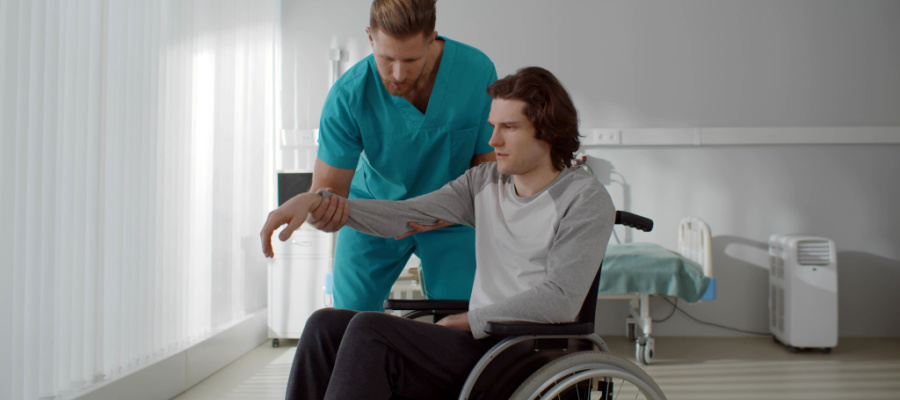Can Paralysis Be Reversed?
Paralysis is a condition that results in the loss of muscle function in one or more parts of the body. It occurs when there is damage to the nervous system, which includes the spinal cord or brain, that impedes the communication between the brain and the affected area. For many, paralysis is a life-altering diagnosis, and the idea of reversal often comes to mind. The good news is that, in some cases, paralysis can be improved or partially reversed, but the extent of recovery depends on several factors.
At Devoted Helpers, based in Sugar Land, Texas, we provide compassionate care for individuals affected by paralysis, helping them with physical and emotional challenges. In this article, we explore whether paralysis can be reversed, what factors influence recovery, and how to support a loved one with paralysis.
Types of Paralysis and Possibility of Reversal
The potential for reversing paralysis largely depends on the type of paralysis, the cause, and the severity of the injury or condition.
Spinal Cord Injury (SCI)
Spinal cord injuries are one of the most common causes of paralysis. They can occur due to trauma such as car accidents, falls, or sports injuries, or from medical conditions such as infections or tumors affecting the spine.
- Partial Paralysis (Incomplete SCI) – In cases where the spinal cord is not completely severed, some nerve signals can still pass through the injured area. With proper treatment, rehabilitation, and physical therapy, there is a possibility of partial recovery. Individuals with incomplete spinal cord injuries may regain some movement or sensation, especially in the lower limbs.
- Complete Paralysis (Complete SCI) – In cases where the spinal cord is fully severed, the chances of reversal are minimal. Current research into spinal cord regeneration and treatments, such as stem cell therapy and nerve growth treatments, offers hope for the future, but as of now, there is no definitive cure for complete paralysis.
Stroke-Induced Paralysis (Hemiplegia)
A stroke occurs when blood flow to part of the brain is interrupted, leading to damage to the brain cells responsible for motor control. Paralysis caused by a stroke is called hemiplegia, and it typically affects one side of the body.
- Rehabilitation Potential – Unlike spinal cord injuries, where nerve damage is often permanent, the brain has some ability to reorganize and compensate for lost function through neuroplasticity. In many cases, stroke survivors can regain movement and function through intensive rehabilitation and physical therapy. The extent of recovery varies based on the severity of the stroke and the timing of treatment.
- Recovery Timeline – Early intervention plays a critical role in recovery. If therapy begins soon after the stroke, there’s a better chance of improving motor function and regaining some independence.
Multiple Sclerosis (MS)
Multiple sclerosis is a chronic autoimmune disease that affects the central nervous system (CNS), causing inflammation and damage to the myelin sheath, which insulates nerve fibers. MS can cause temporary or permanent paralysis, depending on the severity and progression of the disease.
- Relapse-Remitting MS – In this form of MS, symptoms, including paralysis, can come and go. During periods of remission, some individuals may experience partial or complete recovery of motor function.
- Progressive MS – As the disease progresses, paralysis may become more permanent. However, treatments can help manage symptoms, slow the progression of the disease, and improve quality of life.
Peripheral Nerve Injuries
Peripheral nerves extend from the spinal cord to the limbs and organs. Injuries to these nerves, such as those caused by trauma or accidents, can result in temporary paralysis or weakness.
- Recovery Potential – Depending on the severity of the nerve injury, there may be a chance for recovery. Nerves can sometimes regenerate, especially if the injury is not severe. In some cases, physical therapy and surgical intervention may aid in nerve regeneration and help restore some function.
- Delayed Recovery – Peripheral nerve injuries may take time to heal. If the injury is significant, it can lead to permanent paralysis.
Factors That Affect the Reversal of Paralysis
While there are cases where paralysis can be partially or fully reversed, several factors influence the extent of recovery…
-
Timing of Intervention
- Early treatment is crucial for maximizing recovery. The sooner a person receives medical attention and begins rehabilitation, the better the chance for regaining function. For conditions like stroke and spinal cord injuries, immediate medical intervention can minimize long-term damage and enhance recovery potential.
-
Severity and Location of Injury
- The severity of the injury to the spinal cord or brain directly impacts the likelihood of recovery. The higher up the injury occurs on the spinal cord or brain, the more widespread the paralysis tends to be. Injuries to the lower spinal cord or peripheral nerves often have a better recovery prognosis.
-
Age and Health
- Younger, healthier individuals tend to have better outcomes in terms of recovery, as the body’s healing processes are more robust. Older adults may have more difficulty recovering, especially if they have pre-existing health conditions.
-
Rehabilitation and Therapy
- Physical therapy, occupational therapy, and speech therapy are essential components of the recovery process. Intensive rehabilitation helps the brain or spinal cord rewire itself to compensate for lost functions. In some cases, the use of assistive devices like wheelchairs, braces, or prosthetics can improve mobility and independence.
-
Medical Advancements
- Research into stem cell therapy, nerve regeneration, and neurological treatments holds promise for the future. Although no definitive cure exists for many forms of paralysis, advances in medicine may provide breakthroughs that can aid recovery and enhance quality of life.
Can Paralysis Be Fully Reversed?
While complete and total reversal of paralysis is not always possible, many individuals experience varying degrees of recovery depending on the underlying cause of their paralysis and the effectiveness of their treatment plan. For some, paralysis may improve or stabilize over time, while others may face permanent changes in mobility.
It’s crucial to remember that paralysis doesn’t define a person’s worth or potential. Many individuals with paralysis lead fulfilling and active lives with the help of caregiving, rehabilitation, and assistive devices.


